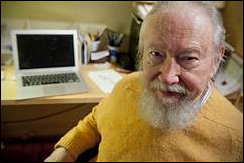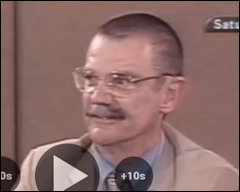Once upon a time, journalists exercised great caution in their use of anonymous sources. When I was a reporter for the Roanoke Times & World-News some 30+ years ago, the editorial staff under the leadership of Frosty Landon and Rich Martin agonized over the use of unidentified sources. When we did use them, as sometimes we had to, editors insisted upon knowing their identities and their possible political or personal agendas, and we alerted readers when such agendas might exist.
How far the profession has have fallen.
Two days ago the Washington Post and New York Times, two of the country’s most prestigious newspapers, didn’t merely use anonymous sources in stories about the Mueller report, they used anonymous hearsay.
Here is the lede of the New York Times article (my emphasis):
Some of Robert S. Mueller III’s investigators have told associates that Attorney General William P. Barr failed to adequately portray the findings of their inquiry and that they were more troubling for President Trump than Mr. Barr indicated, according to government officials and others familiar with their simmering frustrations.
The information doesn’t come from the investigators directly. It comes by way of “associates,” who may or may not be the same people as the “government officials and others” quoted. We know nothing about these government officials and “others.” Moreover, we don’t know how many investigators supposedly share these reservations. Two or three out of the 19 lawyers, 40 F.B.I. agents and other personnel involved on the Mueller team? Ten? Twenty? How representative are their views? And who are the people conveying those frustrations to the media? Might they have a political agenda? How well informed are those sources? How might they be deliberately shaping the narrative?
Here’s the Washington Post lede:
Members of special counsel Robert S. Mueller III’s team have told associates they are frustrated with the limited information Attorney General William P. Barr has provided about their nearly two-year investigation into Russian interference in the 2016 election and whether President Trump sought to obstruct justice, according to people familiar with the matter.
The way both ledes are constructed, we can’t even be sure this is second-hand information. This might be third-hand information. From the way these paragraphs are constructed, it’s conceivable that “people familiar with the matter” are quoting “associates” who conversed with “members” of the special counsel team.
Another concern: What are the odds that the NYTimes and the WaPo reporters independently stumbled across the identical story on the very same day and wound up describing their sources in exactly the same way? I’d say nil. Far more likely, one of those “people familiar with the matter” pitched the story to both newspapers. And if they pitched the story, they clearly had an agenda. Do we know what that agenda is? Neither newspaper tells us.
Perhaps these sources are truly well informed. Perhaps they are conveying information fairly and accurately. Or maybe they’ve picked up scuttlebutt, massaged it, and passed it along to the Times and Post. Or worse, maybe they’re feeding the newspapers total garbage. As readers, we have no way of knowing.
It’s not as if the Times and Post have the best track record.
A Yahoo query on “Washington Post retractions” yields 713,000 results.
A Yahoo query on “New York Times retractions” yields 1,630,000 results.
I can tell you one thing: As reporters at the Roanoke Times, we never would have been allowed to publish such stuff. Frosty and Rich would have demanded that we get the information directly from the source, and even then they would have grilled us on why we couldn’t publish the source’s name. And justifiably so. Every reporter has had the experience of someone telling us that So-and-So said such-and-such, and then when we checked it out, So-and-So said no such thing. People will make all sorts of claims when protected by anonymity. Even when they think they’re telling the truth, they often garble the message.
From what I remember of their politics, I would guess that Frosty and Rich are no fans of Trump. But I can’t imagine that either one would countenance the slipshod journalism used to attack him today. They would build their case against the President the old-fashioned way, brick by brick with on-the-record sources.
One thing I can promise you, neither Steve Haner, who also studied at the knee of Frosty and Rich, nor I will ever quote anonymous sources who quote other anonymous sources who quote yet other anonymous sources. That’s not the way we do journalism at Bacon’s Rebellion.
Correction: In a cutline above, I incorrectly stated that Frosty had taught at the University of Missouri. Rather, he was profiled by the University of Missouri. Frosty surely would have chastised me for such a careless mistake — and I would have fully deserved it!




